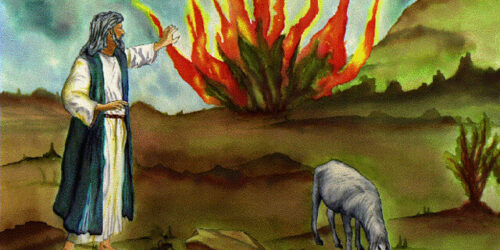There is a story told about a circus bear: obtained as a cub, it spent its life in a cage 20 feet long and 8 feet wide. Each day it paced – 20 feet back and 20 feet forward.
After many years the bear was purchased by a humane organization and released from its cage. Finally free it spent the rest of its life pacing 20 feet back and 20 feet forward.
If a dynamic persists long enough it becomes the status quo: the cage becomes reality. Long-term continuous conflict with the rabbi becomes the norm. A new rabbi is brought in to bring peace – but peace requires a change in culture and that destroys the status quo.
It’s a trap that can only be avoided if there is buy-in with the leadership because in the old dynamic every interaction introduced potential conflict. The members who have survived are either “pot stirrers” who create conflict, distant and removed from the politics, or the precious few who kept fighting to keep the lights on: they suffer a barrage from all sides.
When I arrived at Shaarey Tfiloh there was a small minyan every Shabbat morning. One family with young children supplied the one boy who would chant Anim Zmirot at the end of the service.
(Anim Zmirot is a longish mystical poem about God’s power written in medieval Hebrew – it is traditionally sung by a pre bar/bat mitzvah at the end of each service). To many (especially the boy’s family) it was the high point of the service.
As we grew so did the minyan. Within a year we had tripled attendance and now had more than 10 children who were eager to learn Anim Zmirot. I had to start a rotation: now each child could only lead once/two months. While the minyan and leadership were ecstatic the boy couldn’t help but feel alienated and his family while outwardly happy were very disappointed that their son was not the brightest star of Shabbat morning.
And the father was the chair of the ritual committee – the second most powerful position in the congregation.
I was seen by the general congregation as a positive influence: we had more programs, a growing school and well attended services but the veteran members were becoming distant as their comfort levels were challenged.
There grew an underlying level of tension as each month some new issue brought the previous disfunction to light. As I was aware of the severe financial difficulties of the congregation I only added to the tension with each new member or program begun. I tried to create as small a financial footprint as possible by purchasing my own office furniture, negotiating variances from United Synagogue and cutting expenses in the office as I could – but it was clear that we had to grow to survive. As I became more involved in the finances of the congregation I found that to keep the congregation open certain members had decided to stretch the law – and there was a dirty underside that no one wanted me to access.
The Perils of Growth: Part I

Related Posts
Benefit of the Doubt?
When we last left this narrative a donated Sefer Torah was found to be seriously “pasul” (unusable) and it had mysteriously disappeared from the congregation. This was the Torah donation facilitated by my emeritus… The Sefer Torah was gone. What arrived a week later was a letter from a prominent…
The Rabbis, the scribe, the Torah and the Tefillin
A change in clergy can create a power vacuum that requires time to stabilize. It is not easy being the emeritus of a congregation: You’ve spent so many years intimately involved with the identity of the congregation. Now a new “kid” has arrived and introduces changes (and there is always…
Parshat Zachor
Remember what Amalek did to you by the way as you came forth out of Egypt; he met you by the way and smote the hindmost of you, all that were enfeebled in your rear, when you were faint and weary; and (he) did not fear God. Therefore, it shall…
Shmot
He (Moses) saw an Egyptian beating a Hebrew, one of his kinsmen. He turned this way and that and, seeing no one about, he struck down the Egyptian and hid him in the sand. When he went out the next day, he found two Hebrews fighting; so he said to…
Vayechi
“When I (Jacob) lie down with my ancestors, take me up from Egypt and bury me in their burial place.” He (Joseph) replied, “I will do as you have spoken.” And he said, “Swear to me.” And he swore to him. Then Israel bowed at the head of the bed….
Miketz
Then Judah said to his father Israel, “Send the boy in my care, and let us be on our way, that we may live and not die – you and we and our children. I myself will be surety for him; you may hold me responsible; if I do not…






